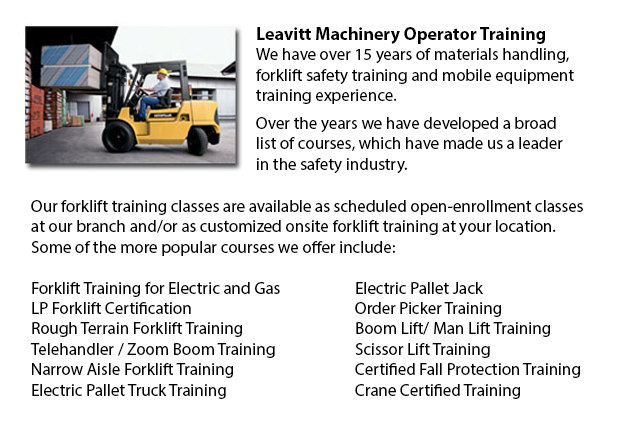
A pallet jack is a model of equipment focused in the maneuvering of pallets of various sizes and weights. They can be utilized as an appendage for platform lifts, cranes and other variations of heavy machinery or be utilized on their own. Pallet hoists are available in a range of configurations from many firms who manufacture shipping and stockroom equipment. They may be rented, or acquired used from used equipment merchants if a company does not desire to invest in the cost of this equipment.
Typically, a pallet jack comprises of a set of forks, that are designed to go beneath the pallet, along with a bar to stabilize the pallet as it is raised. Some pallet lifts have forks mounted to hydraulics which can be applied to raise and lower the pallet, and occasionally, the jack may be fixed, with the movement being accomplished by a tractor or an overhead jack. Generally used in the on and offloading of vehicles, ships and trains, they can also systematize and rearrange warehouse supplies and transporting materials around a warehouse.
Pallet use can be a complex process, as pallets frequently contain extremely important commodities and are oftentimes really heavy. Before using a pallet jack, it is often necessary to obtain instruction in working with pallets and heavy equipment. Understanding the correct handling procedures, how to stay away from danger signs like an unequally overloaded pallet, or how to distinguish a broken pallet that may fail as a consequence of fatigue splits or forceful treatment is necessary for maintaining a safe work environment.
It is really important to ascertain in advance what style of responsibilities may be needed before purchasing a new pallet lift. In a facility with small aisles or close-fitting spaces, picking a pallet jack that is able to maneuver through the aisles might be the best option. If the stockroom already has an overhead jack currently installed, then conceivably, an accessory for the current jack could be the best choice.
-
Crown Forklift
More -
Aerial Lifts
Aerial platform lifts can be used to accomplish a lot of distinctive tasks done in hard to reach aerial spaces. A few of the tasks associated with this type of jack include performing regular repair on structures with lofty ceilings, repairing teleph... More -
Genie Forklift
Genie is a globally recognized company that enjoys the spirit of collaboration with their extensive network of associated clients. Genie Industries prides itself on the image of bringing materials and people higher and extending beyond the goods they... More -
Komatsu Forklift
Komatsu Forklift U.S.A. Inc. has an excellent reputation for building dependable and rugged forklifts. Komatsu is recognized around the globe as a corporation with a rich heritage while retaining an exceptional benchmark of modernization and quality... More -
Boom Trucks
Boom vehicle are often utilized by phone, cable television and utilities firms as they have long folded arms which are typically folded over the roofs of business vehicles. On the end of the extension of extendable arms usually sits a bucket-like app... More

Forklift Training Scottsdale
TOLL FREE: 1-888-254-6157
Scottsdale, Arizona
forkliftcertificationscottsdale.com
Email Us
About Us


